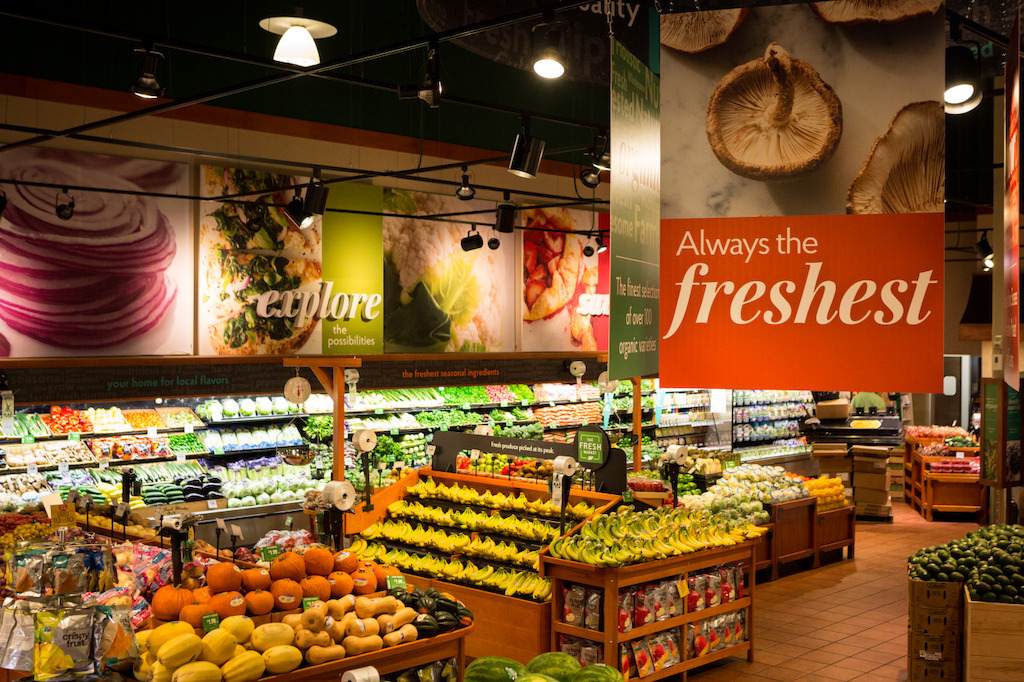There’s no denying that the COVID-19 pandemic is changing everything about the way people live and shop — and savvy supermarket operators are adapting to the new normal and ensuring that they are still supplying what customers need.
That’s especially true in the produce department, where sales during the beginning of the coronavirus crisis were low due to consumer fears about items being touched by others and the desire to buy more long-lasting food.
That caused a drop in fresh produce sales, as people turned more to center store and prepackaged food products, and many consumers started buying groceries online, where produce sales are historically a smaller share of the basket.
But with stay-at-home orders beginning to be lifted and people more accustomed to wearing masks and following safe social-distance shopping rules, consumers are once again buying produce at normal levels. And retailers have managed to keep their stores supplied despite the volatile nature of this virus outbreak.
Maintaining inventory labels
Chris Romano, vice president of produce and floral for The Fresh Market, the Greensboro, N.C.-based chain with 159 locations in 22 states, notes the stores’ produce buyers are having scheduled daily conversations with distribution centers to understand in-stock inventory levels and work with them to develop secondary and tertiary sources and substitutions.
“This could include bringing in an organic option in place of conventional or vice versa, or changing the size of the bags we would normally order — substituting 2-pound bags for 5-pound bags, for example,” he said. “We also saw a tremendous lift in fruits that have a longer shelf life such as apples and oranges, and 150% lift in staples such as potatoes, carrots, celery and onions as a result of guests cooking more, making soups, etc.”

At The Fresh Market, produce buyers are having daily conversations with distribution centers to understand in-stock inventory levels and work with them to develop alternate sources and substitutions.
Early on, facing delays in deliveries, The Fresh Market started to build up some inventory of heartier items so it stayed in-stock on higher-demand items.
“The biggest lesson learned in this situation was where we needed to make improvements in the system, particularly around communication with our suppliers and stores,” Romano said. “While guests were initially focused on stocking up on center-store items in the first couple of weeks, produce was quickly comping at or close to center-store sales. People realized they did not need to stock up on just the staples, and staying in stock was the best way to entice our guests to buy fresh.”
Bouncing back
Chris Dove, vice president of produce category & merchandising for Food Lion, the Salisbury, N.C.-based division of Ahold Delhaize USA, said the company experienced a tremendous increase in produce sales and volume in April and early May as supply and shopping patterns returned to a more settled state following the initial coronavirus-spurred out-of-stocks and consumer focus on center store.
“To help move product through our supply chain, we have partnered with our local DSD produce suppliers to deliver produce directly to more than 900 of our more than 1,000 stores,” he said. “This helps in relieving volume through our distribution centers. Many of our DSD produce suppliers were impacted by the downturn in the foodservice business so this partnership was a win for all.”
Dove says Food Lion has established strong partnerships with its produce suppliers, many of whom operate locally within the communities it serves.
“In collaboration with our suppliers, we have been able to prioritize the items our customers need most and quickly increase the supply to restock our shelves,” he said. “We will continue to monitor our customer needs and work closely with our suppliers to provide the consistency of fresh produce our customers expect from Food Lion.”
Jeff Cady, director of produce & floral for Tops Friendly Markets, a regional East Coast supermarket chain with 170 stores in New York, Pennsylvania and Vermont, notes there were a couple of challenges early on due to the spike in sales, but the supply chain rebounded.
“We were tight on potatoes and some other hard-line commodities, but we were able to navigate our way through by being willing to move from variety to variety and still have product to offer the consumer,” he said. “While there is a turn toward center store and prepackaged, customers at Tops are still buying lots of produce. As we move into spring/summer, produce is top of mind and I believe that will be the case again this year.”
Due to the strength in the produce supply chain, the company has been asked numerous times to add items to its weekly circular, so Cady believes that will certainly help entice people to buying more produce. He added that eating fresh fruit and vegetables is an important part of a healthy diet and if the current crisis doesn’t drive that point home, he isn’t sure what will.
“It is also important because we need to keep the supply chain working from ‘field to fork’—specifically growers as they gamble on crops every year, and we need to do our part to make sure they continue to prosper,” he said.
“So, continuing to purchase fresh is vital to our economy and America’s farmers,” The Fresh Market’s Roman agreed. “Retailers need to keep promoting fresh produce purchases to keep our growers and farmers in business.”
For our most up-to-date coverage, visit the coronavirus homepage.





